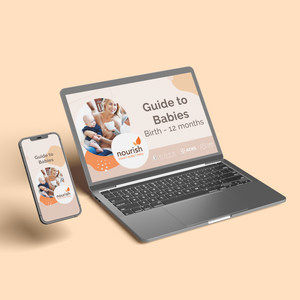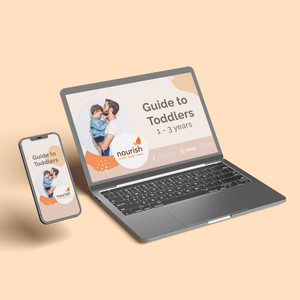It’s normal for expectant parents to focus keenly on their baby’s due date, though it’s estimated only around 5% of women give birth on the date they are due. When that day comes and goes, or a pregnant mother feels she cannot go another day being pregnant, she can be forgiven for wondering what she can do to safely bring on her labour at home.
But do natural ways to bring on labour work?
Natural ways to induce labour do not offer a guarantee, they are simply a way of doing something to see if they can help and bring on labour. Only interventions done by maternity care providers are based on evidence and proven to be effective.
Artificial rupture of the membranes (ARM), prostaglandin gel, cervical ripening with a balloon catheter and/or oxytocin drip are all different methods of starting labour. Another common strategy is known as a ‘strip and stretch’ of the membranes. This is done vaginally and is a way of separating the thin membrane which connects the amniotic sac to the wall of the uterus.
First things first
Speak with your maternity care provider to make sure there’s no reason why you can’t try some natural ways to bring on your labour at home. If you are in a pregnancy risk category, don’t try inducing labour at home. Whilst our pregnancy guide offers a lot of fantastic information, you should always consult with your doctor or healthcare professional.
Natural ways to induce labour
- Go for a big long walk. Some people believe that movement helps the cervix to dilate and for contractions to start. The image of the baby’s weight and pressure on the cervix is a little simplistic but not far from the truth!
- Try doing some yoga exercises or going for a swim. These are healthy activities and will support your body’s release of endorphins – the ‘feel good’ hormones. Avoid swimming if your membranes have ruptured (your waters have broken).
- Drink some Raspberry Leaf Tea – around four cups per day have been found to help tone the uterus and prepare for labour.
- Have sex. Find a position which is reasonably comfortable. Semen has prostaglandins which help the cervix to dilate. Avoid having sex once your waters have broken as this can increase the risk of infection.
- Eat a hot curry or some spicy food, if your reflux lets you! Emptying the bowel and having a big poo is thought to help labour get started and for contractions to begin.
- Munch on some dates. Research has shown that eating dates may help with cervical ripening – getting the cervix ready to thin and dilate.
- Acupuncture is thought to help with balancing energy and stimulating hormones. Follow your own lead on this one; some women don’t like the idea of needles, no matter how fine they are.
- Stimulate your nipples. This helps to release oxytocin – this is the hormone which makes the uterus contract and is released when breastfeeding. Be gentle and aim for around five minutes of stimulation per hour, day and night to help release oxytocin.
What not to do when trying to induce labour
- Try to bring your labour on when you’re unsure of your dates, especially if your baby is not yet due.
- Try to induce your labour if your baby’s movements have slowed down or stopped. Get checked by your maternity care provider or a doctor as soon as possible if your baby’s movements change.
- Be away from home and some distance away from where you plan to give birth.
- Take any risks which could impact on you or your baby.
- Become stressed – this can affect hormonal levels and increase adrenaline which then impacts on oxytocin levels.
While you’re waiting for your labour to start
Waiting for your labour to start will really be an exercise in patience. This comes more easily to some of us than others. If you’re more of a ‘let’s get this show on the road’ type of person, you’re more likely to find it hard sitting around, waiting for the first twinge to start. And you’ll be forgiven for spending much of your days, and nights, asking yourself “could this be it?”. The trick is to keep busy, but not too busy. Try to find a balance between being productive and not exhausting yourself.
10 things you can do to fill in your baby waiting time:
- Rest and sleep when you can. Care well for yourself and build some reserves of energy which you’ll soon need.
- Eat healthy and nutritious food and stay well hydrated.
- Cook and freeze a pile of food which can be easily defrosted and reheated for after your baby is born. You’ll be glad you did.
- Organise an on-line shopping list for regular items you always buy. That way you can just update it with extras as needed when you do your on-line grocery orders after the baby is born.
- Take photos and videos of your pregnant belly.
- Avoid taking on new projects or too much work. Although this may help you to focus on something other than your due date, your body and mind are biologically designed to prepare for birth.
- Spend some precious ‘one on one’ time with your older children. See this as an opportunity to enjoy their company and build on your relationship.
- Have a massage, see your beautician and hairdresser, catch up with friends and clean up your social media. Aim for a stressless time which helps to feed your soul and spirit.
- Write a letter to your baby which you can read to them when they turn 21.
- Importantly, try to view this waiting time as a small period of time which will end. You cannot ultimately control when your labour will start and your baby will be born.
Remember
Trying to induce labour at home by using ‘natural’ strategies does not offer a guarantee. Though some of these strategies may help you to feel you’re doing something towards bringing your labour on. Be open minded about what the results may be. At best, they may help and if they don’t, you and your baby have not been negatively affected by the experience.
Written for Nourish Baby by Jane Barry, Midwife and Child Health Nurse.
References:
Induced labour – what are the options? | Pregnancy Birth and Baby (pregnancybirthbaby.org.au)
Induced labour | Pregnancy Birth and Baby (pregnancybirthbaby.org.au)
Our Products
-

01. Guide to a Healthy Pregnancy
$55 -

02. Positive Birthing Course
$55 -

03. Infant Feeding Guide
$55 -

04. Baby Sleep Guide - First 12 Months
$55 -

05. Toddler Parenting Course 1 - 3 Years
$55
-
 When to Start Antenatal Classes?
When to Start Antenatal Classes?
Becoming a parent is an incredible milestone, but it comes with a host of changes that can be daunting, especially for first time parents. Antenatal classes are all about offering expectant parents the education they need to make informed decisions, look after their bodies and care for their newborn babies. While you probably already have a long list of things you need to accomplish during your pregnancy, it’s a good idea to make time to attend antenatal classes.
-
 Development Milestones 4-8 Months
Development Milestones 4-8 Months
As they reach the middle of their first year, you'll start to see bigger leaps in their growth and ability!
In this article, we’re going to discuss your baby’s developmental milestones between 4-8 months, and what you can expect along the way.





 When to Start Antenatal Classes?
When to Start Antenatal Classes?
 Development Milestones 4-8 Months
Development Milestones 4-8 Months








